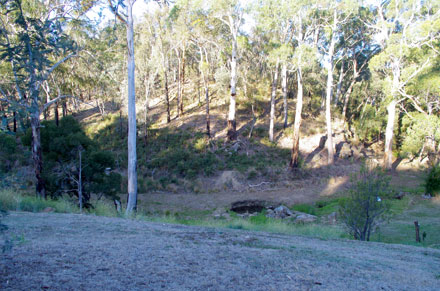
The National Farmers Federation has a forestry expert running the government and industry drive to encourage farmers to plant more trees to alleviate Australia’s plantation shortage. Warwick Ragg, the NFF’s general manager of natural resource management, was the chief executive of Australian Forest Growers in the decade up to 2013. Source: Philip Hopkins for Timberbiz
Mr Ragg, an experienced hand through his work at the AFG at trying to get farmers to plant trees, told DTN he was keen to partner with the forests sector to grow plantations on farms.
There were barriers, as the managed investment scheme furore had alienated many in the farming community.
“We don’t have a silver bullet,” he said, but was very encouraged by the work at Melbourne University under Rod Keenan, Professor of Ecosystems and Forest Science.
The project, ‘Next Generation Forest Plantation Investment’, is being driven by a team from Melbourne University and Swinburne University, backed by industry – Australian Paper, Hancock Victoria Plantations, Midway, AKD Softwoods and OneFortyOne Plantations.
A key focus of the project, which started in late 2017, is generating new business models that can put trees in the ground. Institutional investors, superannuation funds and trusts are a likely source of funds.
Professor Keenan’s group is due to release an interim report by the end of this month.
Mr Ragg said the project should give more insight into the way forward. Issues included ‘How much management responsibility does a farmer want to take?’; ‘What role would integrated forestry have?’; ‘How much out-sourcing would a farmer do to dedicated forestry advice?’; or ‘Would farmers prefer joint ventures?’.
“I’m very encouraged that the forestry sector recognises there needs to be a partnership approach. That is the MIS legacy – ‘We’re going to grow trees here and we don’t really care what you think about it’,” he said.
Mr Ragg said one of the most compelling factors in integration was that it removed the capital cost involved.
“The underlying land cost is a significant investment up front for a plantation investor. If a leasehold or joint venture approach applies to farmers, that is a ‘win-win’ – a lease payment, an annuity on a reasonably regular basis, hopefully annually, that may increase over the life of the crop as it becomes more real to the forestry sector,” he said.
“We also recognise that there is a range of opportunities – full production opportunities, integrated opportunities as well. The jigsaw farm model has reportedly increased carrying capacity whilst having up to 18% of forestry in farm landscape. Those models are attractive, but we must be confident the numbers are there to do so.”
Mr Ragg praised the concept of forestry hubs in the government’s plan, where plantation efforts would concentrate on existing forestry regions. This would alleviate the production and geographic restrains on the forest sector.
“We believe forestry will take a more commercial approach,” he said, integrating forestry as a commercial crop, rather than the more voluntary farmer approach of some tree farming.
“That’s more a landscape model, not a production model,” he said.
Mr Ragg said the NFF strongly backed better carbon farming initiatives by reviewing and removing the rainfall triggers in plantation and farm forestry methodologies.
Under the Emissions Reduction Fund, any land with rainfall more than 600 millimetres is ineligible for carbon farming. Industry relies on regions with 700mm-plus rainfall to produce economic trees and wood of the right quality and species.
The review has been promised by both the Government and Opposition, but no concrete review proposals have been announced.
Mr Ragg said the NFF would continue to work alongside the forestry industry; the Australian Forest Products Association was a member of the NFF.
“They recognise it’s a collaborative journey. It’s no longer a ‘We want your land and will pay you anything for it’ approach,” he said.
The Federal Government’s $20 million forestry plan aims to plant one billion trees in the next decade, but the AFPA has criticised the amount as inadequate because it amounts to only two cents per tree. The plan relies heavily on farmers planting trees on their land.
Latest figures show that Australia’s timber plantations are continuing to decline. In 2016-17, Australia lost 19,700 hectares of plantations, down 1% to 1,955,100 hectares from 1,974,800 hectares the year before, according to ABARES.
The biggest drop came in hardwoods, which fell by 19,800 ha, or 2.1%, to about 908,500ha. The land was converted back to agriculture. Softwood plantations in 2016-17 rose marginally by about 100 ha to total 1,036,900 ha.
The losses far outweighed the gains; about 200 new hectares were established in 2016-17, split evenly between hardwoods and softwoods.
The establishment rate has decreased dramatically from 86,600ha in 2006-07 to the 200ha in 2016-17.





